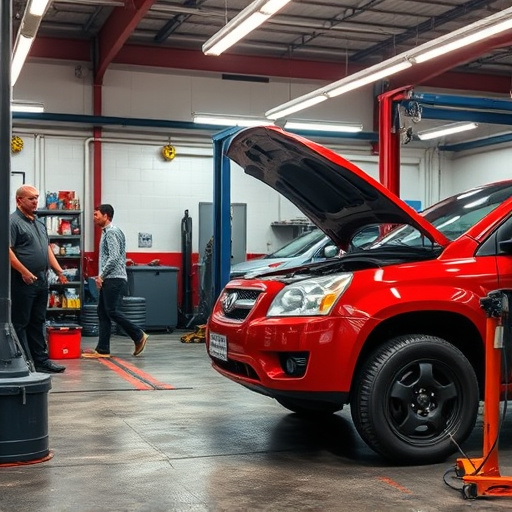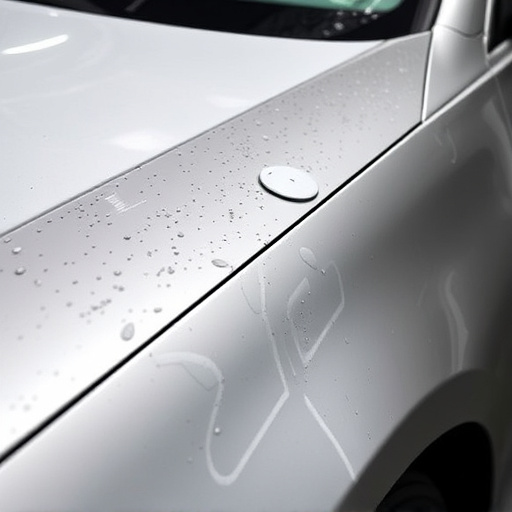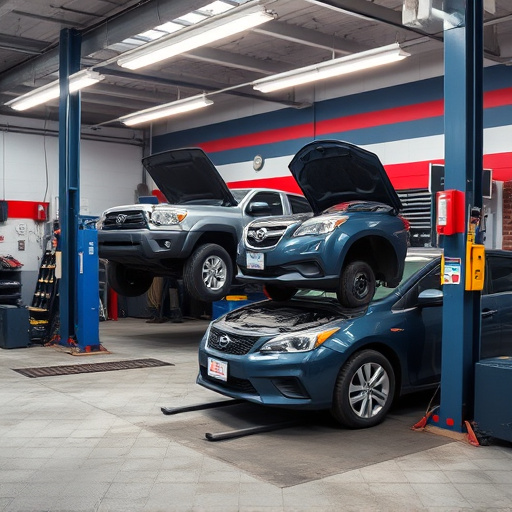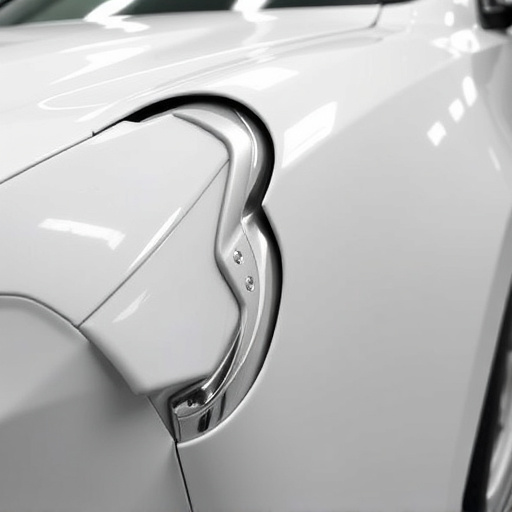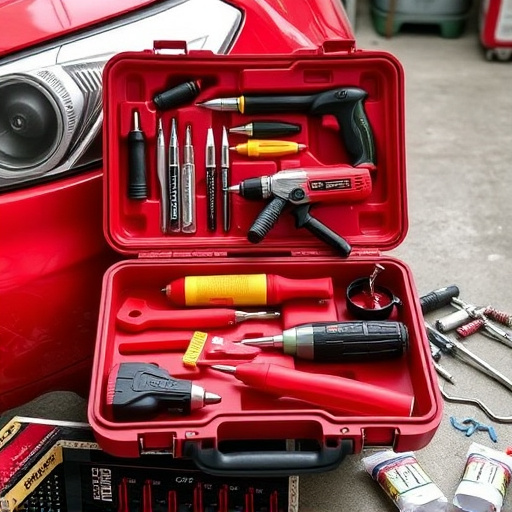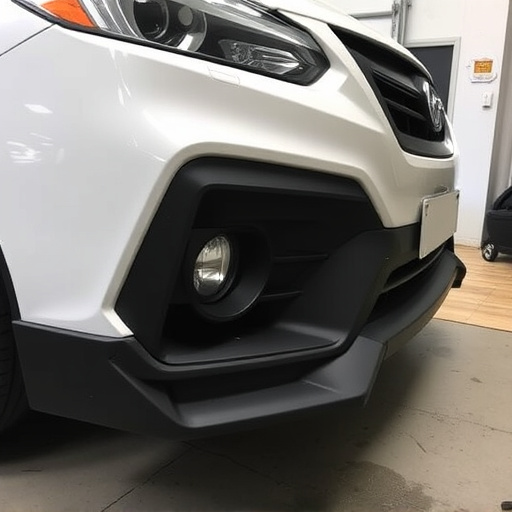The current collision repair practices pose significant environmental challenges due to toxic chemicals and waste disposal. However, with growing public awareness of sustainability, there is a pressing need for greener alternatives like water-based cleaning solutions, eco-friendly paints, and efficient recycling programs. Embracing environmentally safe collision repair methods can minimize ecological footprints, reduce toxic chemical waste, and protect water sources, while enhancing business reputations and appealing to conscious consumers. The automotive industry is transforming towards sustainable practices, driven by both environmental concerns and strategic imperatives, involving eco-friendly materials, less energy-intensive processes, and digital technologies to achieve a reduced carbon footprint.
The collision repair industry is on the cusp of a significant transformation, with environmental sustainability at the forefront. As the world demands greener solutions, traditional methods are being reevaluated. This article explores the current state of collision repair, highlighting challenges and the growing need for environmentally safe practices. We delve into the benefits, innovations, and potential for a sustainable future, providing insights into how the industry is embracing eco-friendly approaches to reduce its ecological footprint.
- The Current State of Collision Repair: Challenges and Concerns
- Embracing Environmentally Safe Practices: Benefits and Innovations
- A Sustainable Future: Implementation and Industry Transition
The Current State of Collision Repair: Challenges and Concerns

The current state of collision repair presents a unique set of challenges and concerns. Traditional methods often involve the use of toxic chemicals, generating significant environmental impact. Auto collision centers typically rely on harmful solvents for degreasing, paint removal, and surface preparation, contributing to air and water pollution. Moreover, the disposal of waste materials from these processes can be problematic, leading to landfilling or incineration, both of which have detrimental effects on the ecosystem.
These practices are not only environmentally damaging but also pose health risks to workers in collision repair facilities. With growing public awareness about sustainability, there is a pressing need for greener alternatives—a shift towards environmentally safe repair methods that minimize ecological footprints without compromising quality. This includes adopting water-based cleaning solutions, eco-friendly paints, and efficient recycling programs for scrap materials, including car scratch repair and tire services components.
Embracing Environmentally Safe Practices: Benefits and Innovations
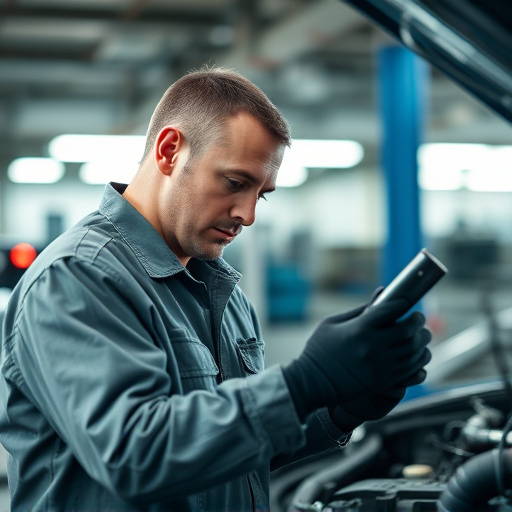
Embracing environmentally safe practices in collision repair isn’t just a trend; it’s a necessary step towards a more sustainable future. By adopting eco-friendly techniques, collision centers can significantly reduce their environmental impact. One of the primary benefits is minimizing the use of toxic chemicals and materials that were once common in automotive repair. These substances often end up in landfills or contaminate water sources, causing long-term ecological damage.
Innovations in environmentally safe repair include the development of biodegradable materials for car dent repairs, as well as the implementation of efficient recycling programs. Many modern collision centers are now equipped with state-of-the-art equipment that allows them to reuse and recycle metal and plastic parts from damaged vehicles, cutting down on waste and conserving resources. These practices not only benefit the planet but also enhance the image of automotive repair businesses, appealing to environmentally conscious consumers and fostering a more responsible and sustainable industry.
A Sustainable Future: Implementation and Industry Transition
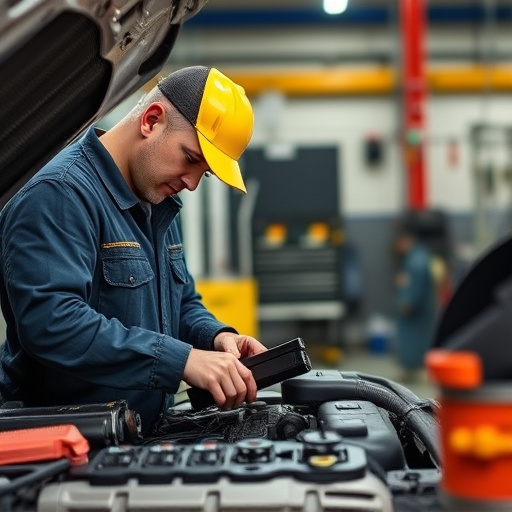
The automotive industry is undergoing a significant transformation, driven by a collective need for sustainability and environmentally safe repair practices. This shift is not just a response to growing environmental concerns but also a strategic move to future-proof the sector. As such, the transition towards eco-friendly collision repair is gaining momentum, with many professionals recognizing its long-term benefits.
The implementation of sustainable methods in car body repair offers a promising path forward. By adopting environmentally safe techniques, the industry can reduce its carbon footprint and minimize the impact of automotive accidents on the planet. This transition involves exploring alternative materials that are recyclable, biodegradable, or made from recycled content, revolutionizing auto dent repair processes to be less energy-intensive, and integrating digital technologies for precise measurements and efficient workflows. The ultimate goal is to ensure that collision repair not only restores vehicles to their pre-accident condition but also does so in harmony with the natural environment.
As we look ahead, the collision repair industry is poised for a significant transformation towards more sustainable practices. The adoption of environmentally safe repair methods is not just a trend but a necessary step to minimize the ecological impact of an inherently resource-intensive sector. By leveraging innovative technologies and materials, the industry can reduce waste, lower emissions, and contribute to a greener future. This transition requires collaboration among repair shops, manufacturers, and regulatory bodies to establish standardized, eco-friendly procedures, ensuring a comprehensive and positive change in the way we address automotive damage.
